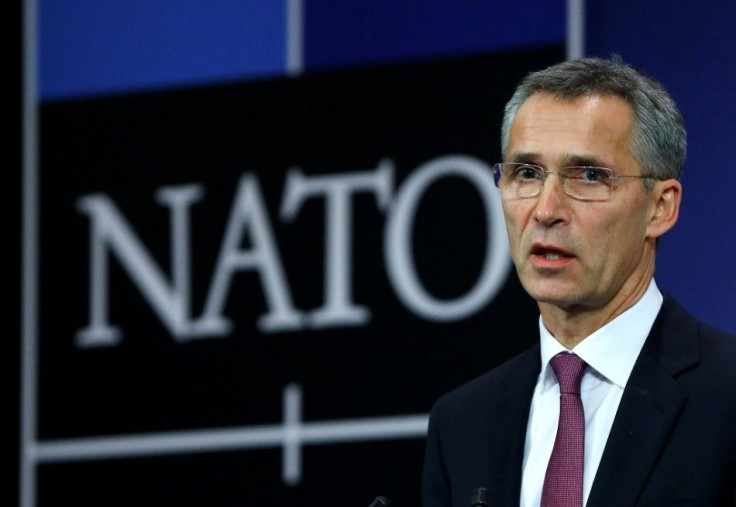Russia Warns US That It Can Counter Its Anti-Ballistic Missile Systems: Sees PGS Of US As A Serious Threat

The recent show of military strength by the U.S. in Eastern Europe for reassuring the region, including Poland and Baltic countries, has provoked a strong reaction from Russia. It warned the U.S. that Russia has the military resources to counter the former’s anti-ballistic missile systems. Alexander Lukashevich, official representative of Russian Ministry of Foreign Affairs said, Russia, despite having such capabilities, would rather not use it.
Ukraine Issue
In mid March, a large convoy of the U.S. army infantry had made a show of strength in Eastern Europe. It sought to provide "reassurance to a region concerned" that the conflict between allegedly Russian-backed rebels and government forces in Ukraine will harm its security.
The "Dragoon Ride" convoy from Estonia passed through Latvia and Lithuania and entered Poland. It had dozens of Stryker and armoured vehicles from the 3rd Squadron of the 2nd Cavalry Regiment on their way back to Germany. They also took part in the “Atlantic Resolve” exercise to show off NATO's readiness to defend member states. Gen. Boguslaw Pacek, in charge of pro-defense actions, said the convoy sent a signal to "those in the East" that NATO is strong and united, reported Fox News.
Referring to the message from the U.S, the Russian official claimed that Russia has the required capabilities to counter any threat from the U.S. anti-ballistic missile systems. The only thing is Russia is showing restraint and is not going to use it unnecessarily. Lukashevich also warned countries, which are placing these U.S.-owned anti-ballistic missile system in their territory.
Moscow has been protesting against deployment of anti-ballistic missile systems in Europe, especially around its borders. Russia has also taken some counter measures and put in place missile early-warning systems in Kaliningrad region, its western part.
In recent times, there were media reports that the U.S. is trying to pressure Moscow in light of the Ukrainian crisis by expanding its presence in the Eastern Europe and Scandinavia with enhanced deployment of air defense and anti-ballistic missile systems, army units as well as surveillance units. This also coincided with NATO Secretary General Jens Stoltenberg's announcement of new command centres in six countries: Poland, Romania, Bulgaria, Lithuania, Latvia and Estonia.
In September 2014, in the backdrop of the verbal exchanges between Russia and the USA, many military maneuvers also took place. Russia held a military exercise for practicing the interoperability between Topol missile systems and its aviation systems. NATO, on its part, amassed its service members in a few maneuvers in the western part of Ukraine.
Boosts Air Safety
Meanwhile, Russia has stepped up its air and missile defense capabilities to foil any threat by the U.S. Prompt Global Strike. This was stated by top Russian military officials. According to Major General Kirill Makarov, Russia’s Aerospace Defense Forces’ deputy chief, the potential threat of the PGS against the Russian Federation is severe and is a top challenge for the Aerospace Defense Forces, reported Press TV.
The Russian military official said Russia has given priority to develop an effective air and missile defense system to tackle the threat posed by the PGS, by which the U.S. seeks to deliver precision-guided strikes with conventional weapons at any target in the world in less than one hour.
“It is precisely to combat these aerial assets that we are building the air and missile defense of Russia’s system,” Makarov stated. Russia’s political and military leadership too regards this task as paramount, he added.
US Missile Arsenal
Russia estimates that the United States will have as many as 8,000 cruise missiles, by 2020, in which 6,000 will be capable of carrying nuclear warheads. Makarov said Russia can say with “some degree of certainty” that “under certain conditions” these military assets of the U.S. may be used against targets in Russia.
Moscow, in its new military doctrine adopted in December 2014, had also listed the PGS as well as NATO’s military buildup as top security threats. “Russia is capable of and will have to develop a system like PGS,” Deputy Defense Minister Yuri Borisov stated in December 2014.
In a tone of self assurance, Makarov said Russia is already in the process of building new generation surface-to-air missile system, S-500, which is capable of intercepting supersonic targets. It has already tested a new longer-range guided missile for the current generation of S-400 surface-to-air air defense system. Many tests are underway and most of them have been successful as the surface-to-air missile has successfully hit the targets, the Russian official added.
(For feedback/comments, contact the writer at kalyanaussie@gmail.com)




















